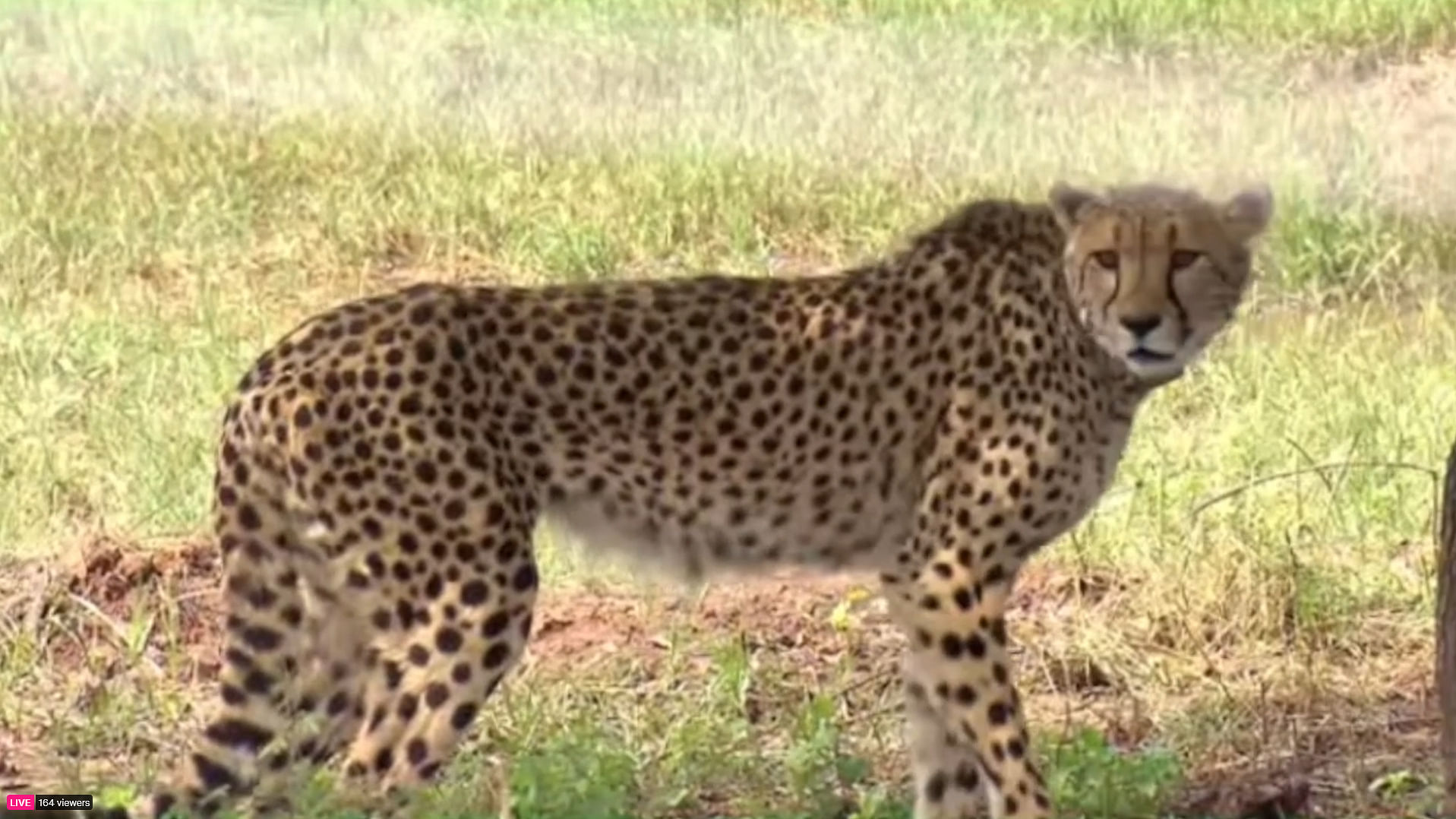
India on Saturday took the first step to successfully establish a meta-population of a predator animal in the wild through intercontinental trans-location when Prime Minister Narendra Modi released three African cheetahs in Kuno Palpur national park of Madhya Pradesh seven decades after cheetahs became extinct in India.
Over the next 15 years, the Union Ministry of Environment and Forest would import cheetahs from African nations to create a breeding population of the spotted feline in the central Indian landscape that once housed hundreds of such animals. Such a conservation experiment has never been carried out anywhere in the world.
The first batch of eight animals were flown into Gwalior in a special flight from Windhoek in Namibia after which IAF helicopters ferried them to the park. While Modi released three of them in their designated quarantine zones, other dignitaries released the rest.
After spending a month in quarantine, the animals would be released in a larger holding area (six sq km) where live prey would be available. The forest officials will keep the cheetahs under watch for another few weeks before a decision is taken on their release in the wild. Satellite radio collars have been put on each cheetah for their geolocation updates which will be monitored.
“The cheetahs have come as guests, and are unaware of this area. For them to be able to make Kuno National Park their home, we have to give them a few months' time," the Prime Minister said, asking people to wait for a few months to open the gates of the park.
"International guidelines are being followed and India is trying its best to settle these cheetahs. We must not allow our efforts to fail."
The current carrying capacity for Kuno (748 sq km area) is a maximum of 21 cheetahs. Once restored fully, the larger landscape can hold about 36 animals. The carrying capacity can be further enhanced by including the remaining part of the Kuno Wildlife Division (1,280 sq km) through prey restoration.
The Namibian cheetahs may soon be joined by another 12 from South Africa once New Delhi enters into an agreement with Pretoria. For the next five years, 4-8 animals would be imported every year.
But to establish a meta-population with cheetahs at Kuno and three other nearby sanctuaries named Nauradehi, Gandhisagar and Mukundara forests, India would have to import African cheetah (2-4 animals) at a gap of every 1-4 years for the next 15 years because of the cub mortality of 30-60% and adult mortality of 12-15 per cent among the animals, according to a document prepared by the ministry.
This can potentially delay the introduction of Asiatic lions from Gir to Kuno that has been prepared as a second home for the lions in order to reduce their vulnerability from infectious diseases.
"The conservation objectives as outlined in the Action Plan to introduce African cheetahs in India are unrealistic and unfeasible. I see this primarily as an attempt to stall the translocation and reintroduction of lions from Gir to Kuno which was ordered to be implemented in letter and spirit within six months by the Supreme Court on April 15, 2013," wildlife biologist Ravi Chellam, CEO of Metastring Foundation and Coordinator of Biodiversity Collaborative told DH.
"The government has not acted on the 2013 order but has moved with alacrity to act on an order of January 2020 to get cheetahs from Africa. Isn’t that very revealing of the motivations behind this project especially when the NTCA’s Review Petition sought permission to survey sites other than Kuno to determine their suitability for introducing cheetahs," he added.
